Italian Lamb Lasagna with Pecorino Bechamel
Updated Aug 21, 2025, Published Feb 21, 2024
This post may contain affiliate links. Please read our disclosure policy.
An incredibly delicious Lamb Lasagna made with a rich ragu, layers of fresh homemade pasta and a creamy bechamel sauce made with Pecorino cheese. Delicious comfort food that’s perfect for family dinners and celebrating Easter.
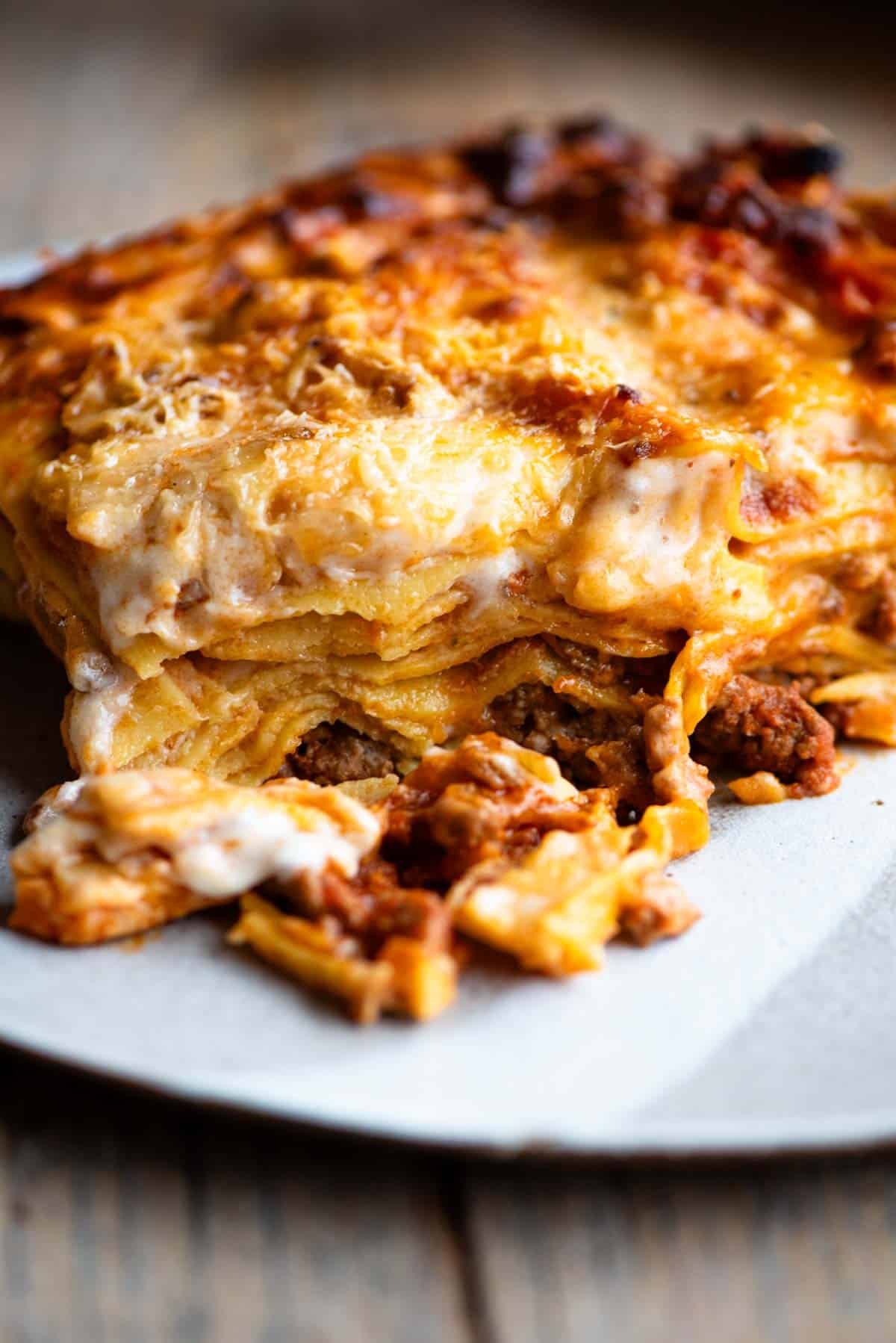
If you’re looking for a showstopping and delicious way to serve lamb at Easter then this Lamb Lasagna is it.
It’s made with a slowly simmered rich ragu, layers of fresh homemade pasta and a smooth, creamy and delicious Pecorino sauce…it’s so good!
Lasagna does take a lot of time and effort to make (especially if you’re making homemade pasta too which I recommend you do) but it’s undeniably delicious and so worth the effort. Just read the rave reviews on our traditional beef lasagna, it’s worth it!
It’s the type of dish you make on a lazy afternoon, sipping on a glass of wine and listening to your favourite music. I hope you enjoy it as much as we do!
Buon Appetito e Buona Pasqua!
See the recipe below including notes on ingredients, step by step photos, tips, variations and a video tutorial. For the full printable recipe scroll to the bottom or click the recipe link below
Ingredients
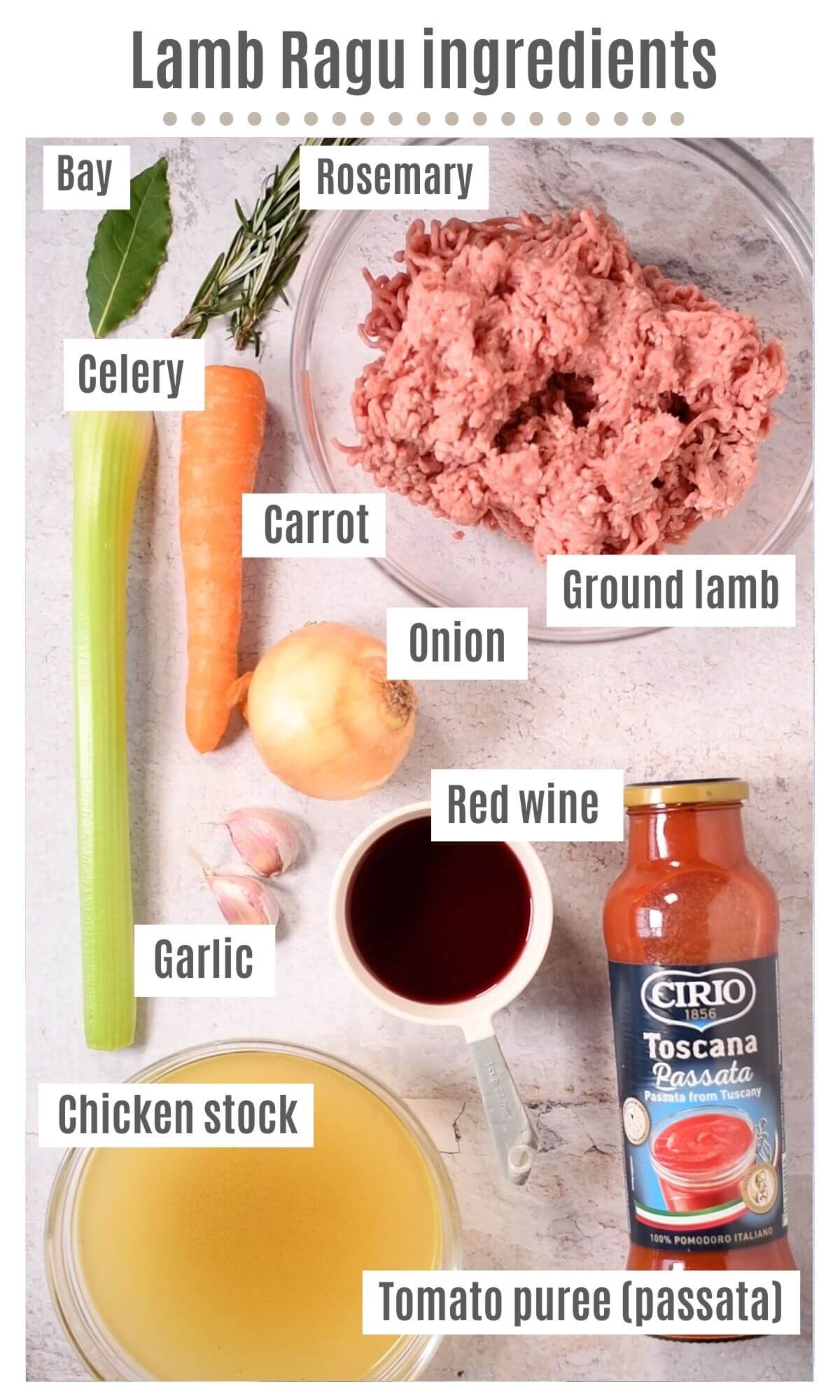
Pin this now to find it later
Pin It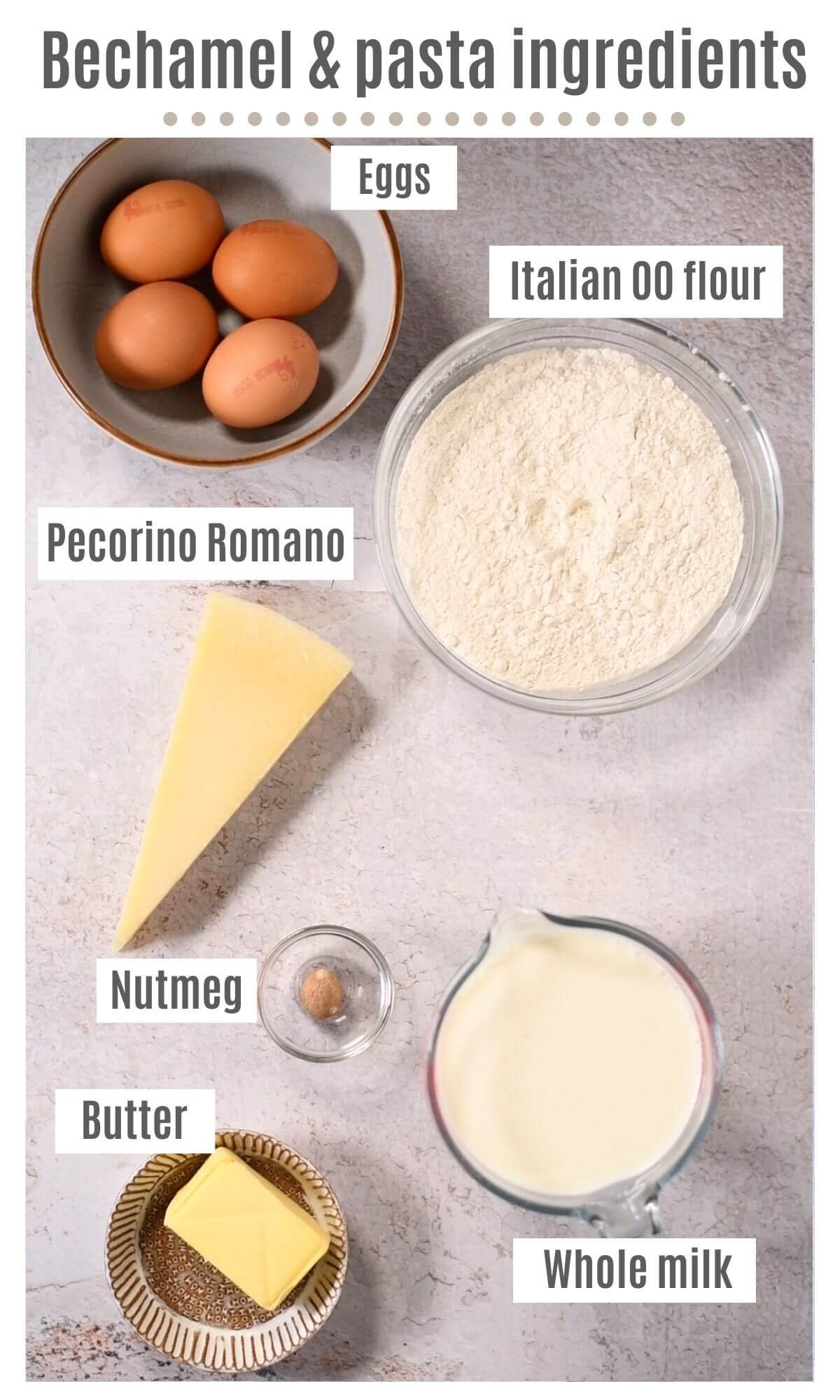
Ingredient notes and substitutions
- Ground lamb mince – use good quality meat, lamb is quite fatty so you’ll need to drain a lot of the fat away.
- Soffritto – carrot, celery and onion. Each of these veggies add a delicious depth of flavour to the sauce.
- Garlic – as always, fresh garlic is a must (no powders).
- Red wine – you could also use white wine or if you prefer, leave it out altogether (it does add a lot of flavour though).
- Tomato – we like to use passata (tomato puree US) but you could use crushed tomatoes.
- Chicken stock – use low sodium so you can adjust the amount of salt later on.
- Herbs – rosemary and bay (both fresh).
- Homemade pasta dough – Italian 00 flour and good quality eggs are all you need. Alternatively, you could use store-bought fresh pasta sheets.
- Besciamella – whole milk, butter, flour and nutmeg (I highly recommend using whole milk and not reduced fat).
- Pecorino Romano – this cheese is absolutely delicious with lamb and really worth using although you could use Parmigiano Reggiano instead.
Step by step photos and instructions
To make the ragu
Finely chop the carrot, celery and onion and set aside.
Heat a drizzle of olive oil in a large pan and brown the lamb. Once browned remove the lamb to a bowl using a slotted spoon and pour all of the fat into a separate bowl (discard once solidified) (photos 1-3).
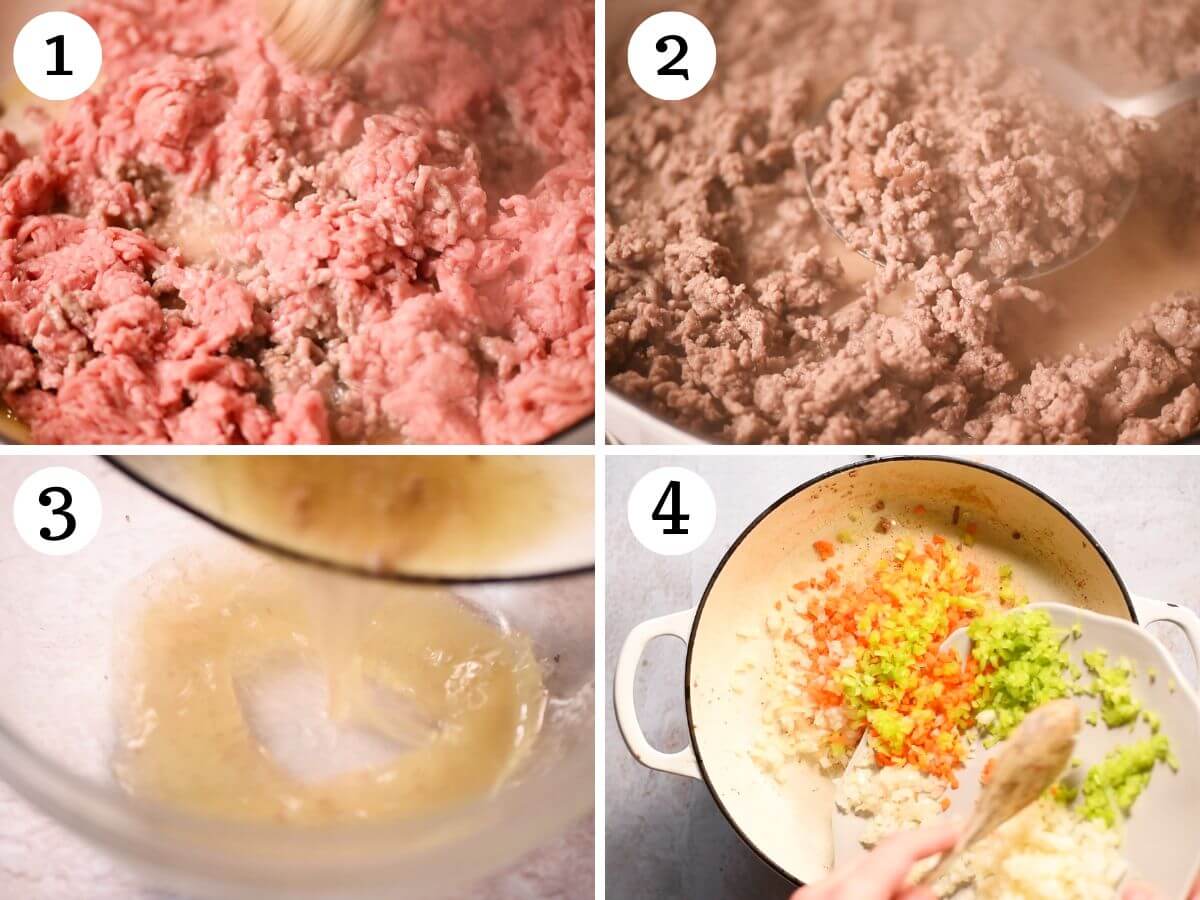
Next, add about 1 tablespoon of olive oil to the pan and saute the soffritto (carrot, celery and onion) on a medium-low heat until soft but not browned. Do this slowly to develop flavour (about 10 minutes) (photo 4).
Once softened, add the garlic and saute for about 1 minute. Add the drained lamb back to the veg and stir to combine. Add the red wine and let it reduce for about 2-3 minutes until you can no longer smell the alcohol (photos 5-7).
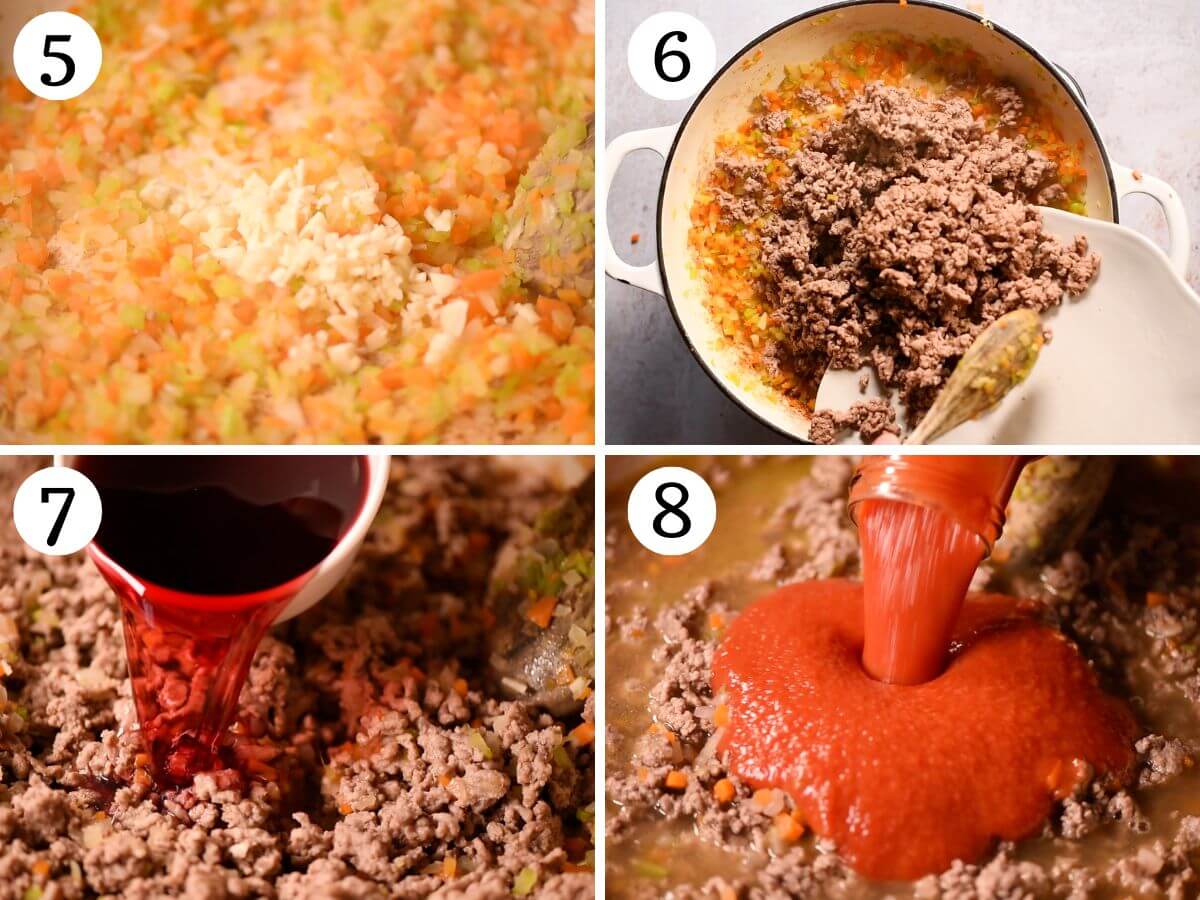
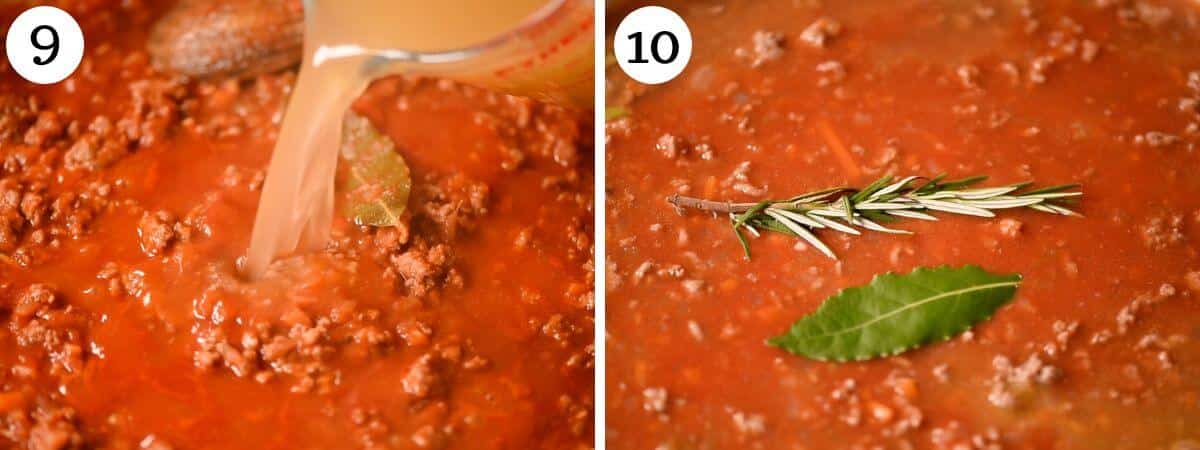
Add the tomato, half of the chicken stock, bay leaf and rosemary sprig. Stir to combine and let it simmer for 4 hours uncovered adding the remaining stock half way through. If the sauce reduces too much you can add more water (photos 8-10).
Make the pasta dough
Tip the flour on a clean work surface and make a large wide well in the middle. Add the eggs to the well and scramble them with a fork (photo 11).
Using your fork start incorporating the flour into the egg a little at a time until a rough dough forms. Use your hands to bring it together and knead it for 10 minutes (photos 12 and 13).
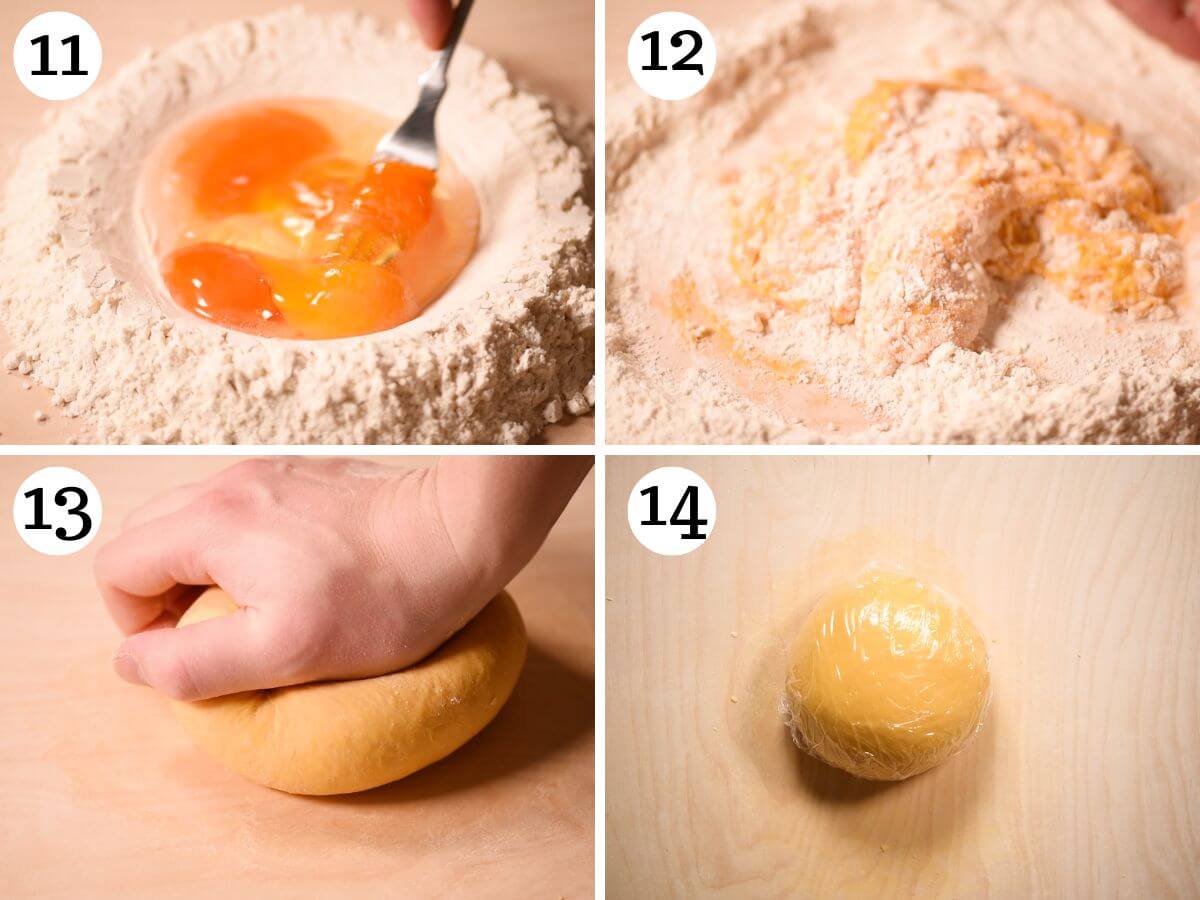
Pasta tip: the hydration of your pasta can vary depending on the size of your eggs/humidity. If it seems very sticky you can incorporate more flour a little at a time and if too dry you can wet your hands to knead the dough adding in more moisture.
Once kneaded, wrap your dough in plastic wrap (cling film) and let it rest for at least 30 minutes (photo 14).
Make your bechamel
Add the butter to a saucepan on a medium heat. Once melted, add the flour and whisk into the butter for around 1 minute to create a roux (photos 15 and 16).
Next, add half of the milk whilst whisking until smooth and lump free. Once thickened, add the rest of the milk and whisk until smooth and thickened (photos 17 and 18).
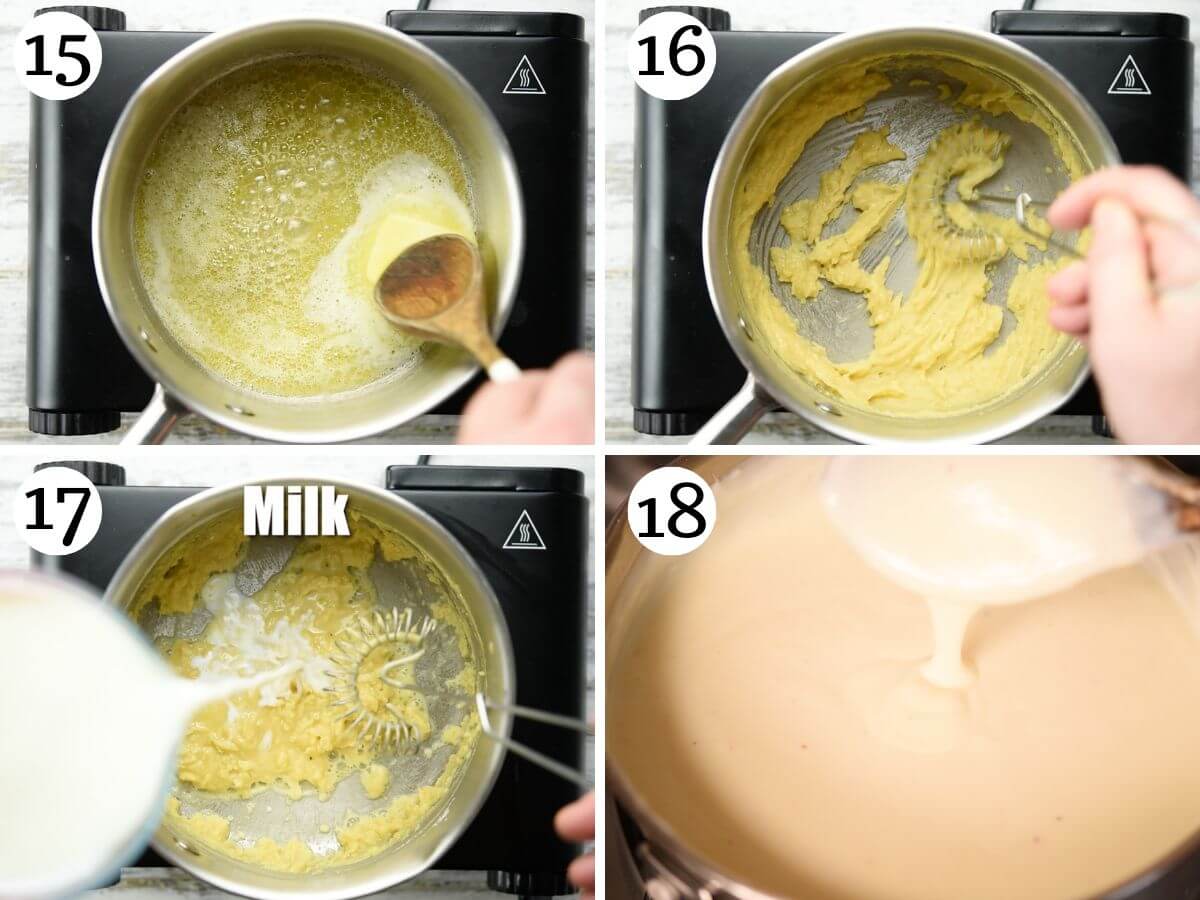
Add a pinch of salt, pepper, nutmeg and the grated Pecorino cheese, stir until the cheese has melted and set aside.
Roll out and blanch the pasta
Bring a large pot of water to a boil and salt it well.
Meanwhile, set up your pasta machine and set it to the widest setting (usually number 0). Cut your dough in half keeping one half wrapped in plastic wrap (photo 19).
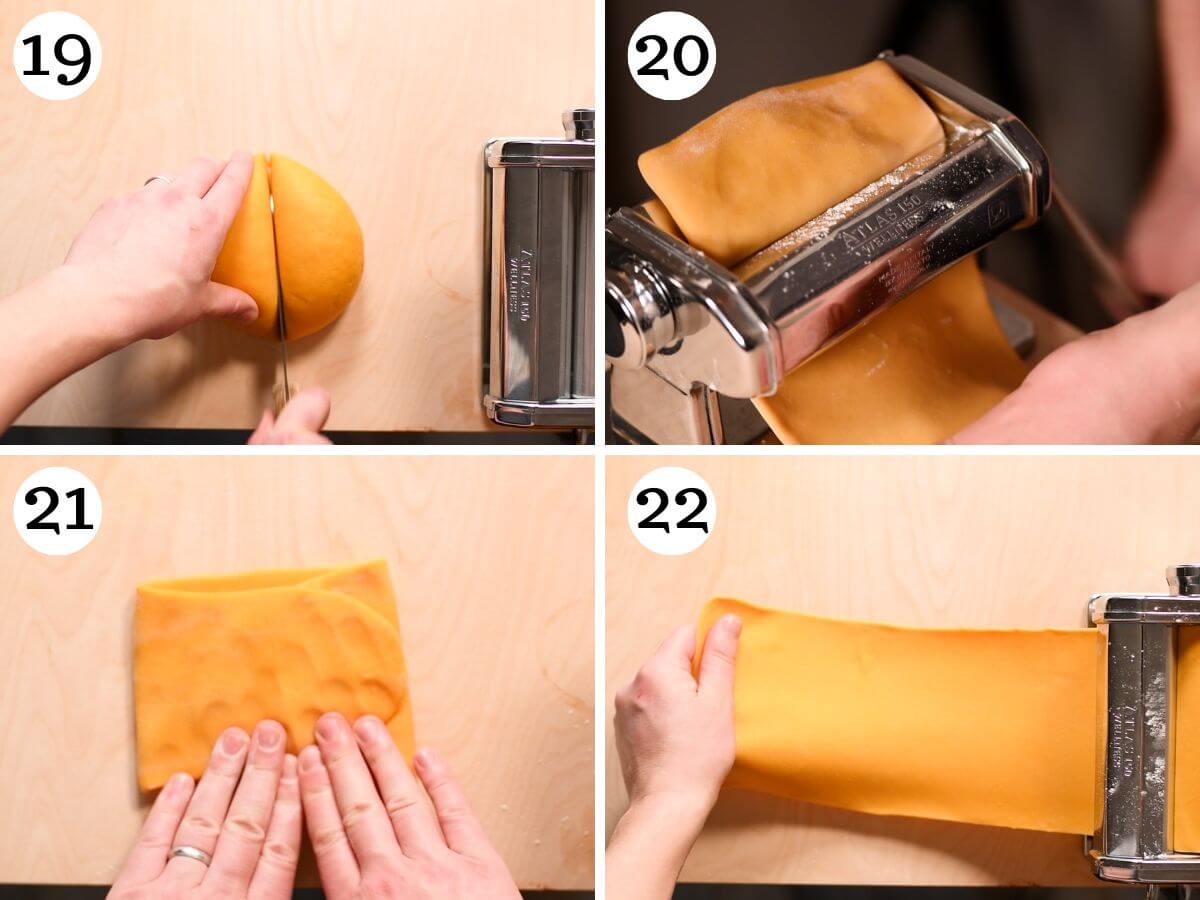
Flatten the other half so it’s easier to pass through your pasta machine and pass it through the widest setting. Fold one end of the dough to the middle and the other end right over that as if you were creating a leaflet. Flatten the dough and pass it through the widest setting again. Repeat this one more time (photos 20-22).
Next, roll your dough once through each setting up until the 3rd last number (usually number 7). You may need to lightly dust the pasta dough, surface and pasta machine with flour if it feels too sticky.
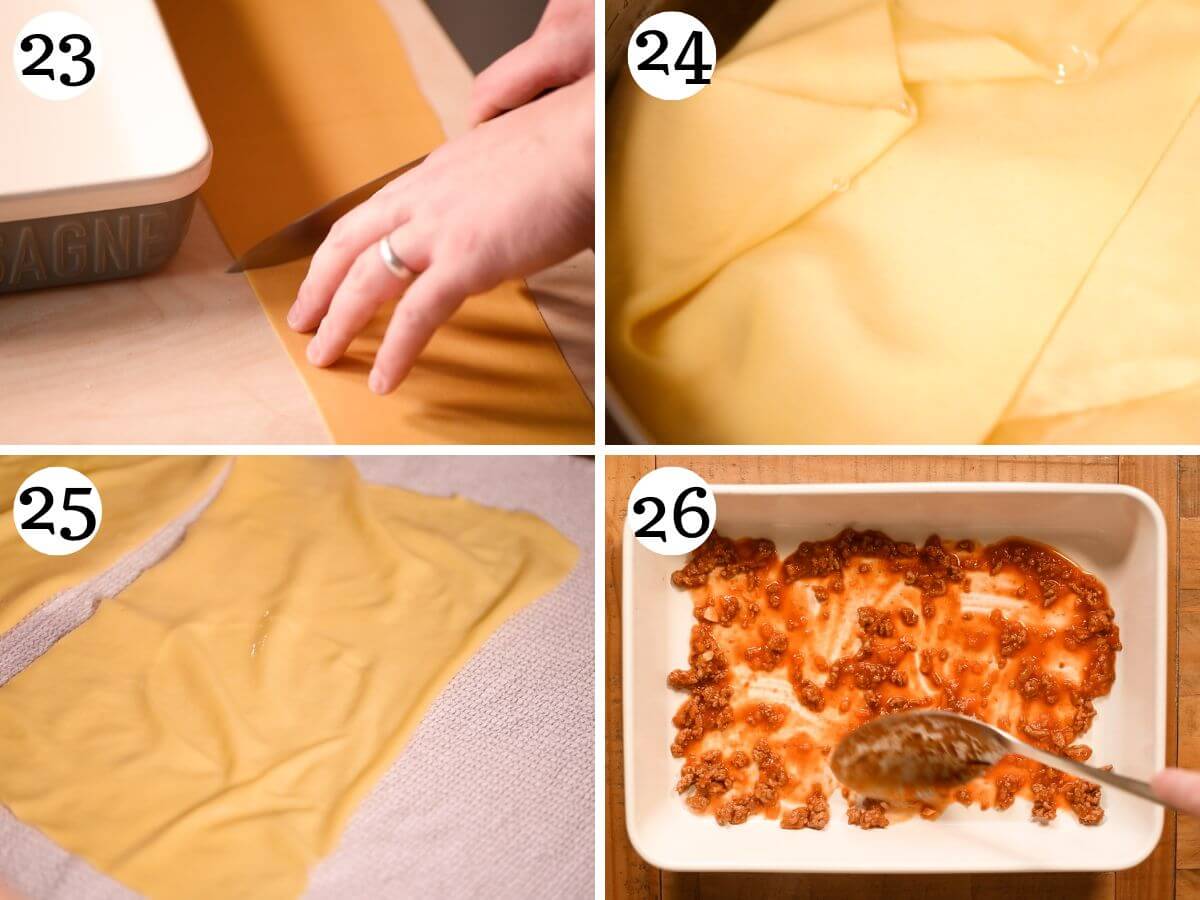
Cut the pasta into sheets big enough to fit your lasagna dish. Blanch them in the boiling water (about 2 or 3 at a time) for 1 minute then transfer them to a clean kitchen towel. Let them dry out for a few seconds (photos23-25).
Repeat this with the second half of the dough. Tip: I find it easier to start assembling the lasagna with half of the blanched pasta before rolling out the rest.
Layer the lasagna
If baking straight away pre-heat the oven to 200C (400F).
Spread a thin layer of ragu on the bottom of your baking dish and lay the first layer of pasta sheets on top (you can cut any excess pasta (photos 26 and 27).
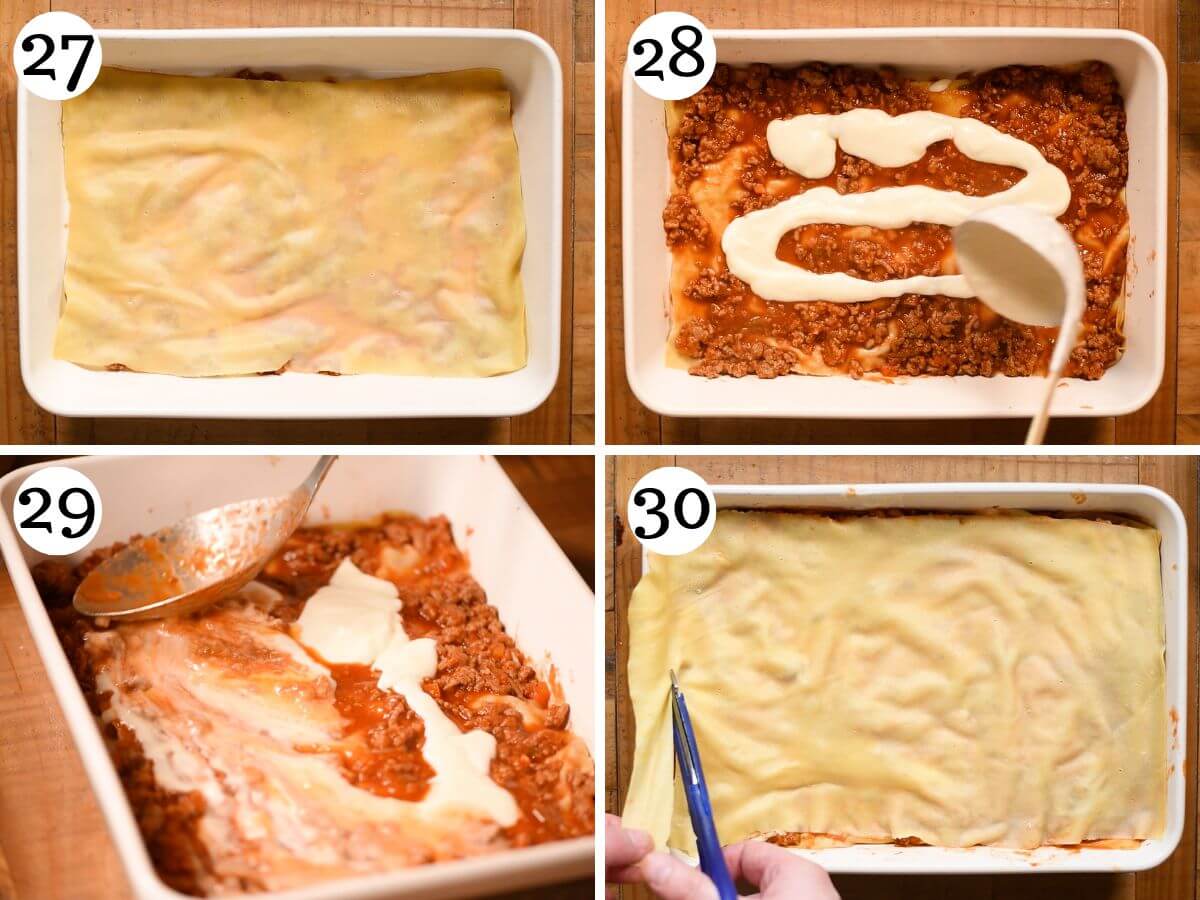
For the next layer, spread out a large spoonful of ragu and a ladleful of bechamel spreading it out on top of the ragu. Continue the layering until you have used up all the ingredients (you should get 6 layers) making sure the final layer is a little ragu and a generous amount of bechamel (photos 28-31).
Top with a grating of Pecorino cheese and bake uncovered for 30-40 minutes until golden and bubbling (photo 33).
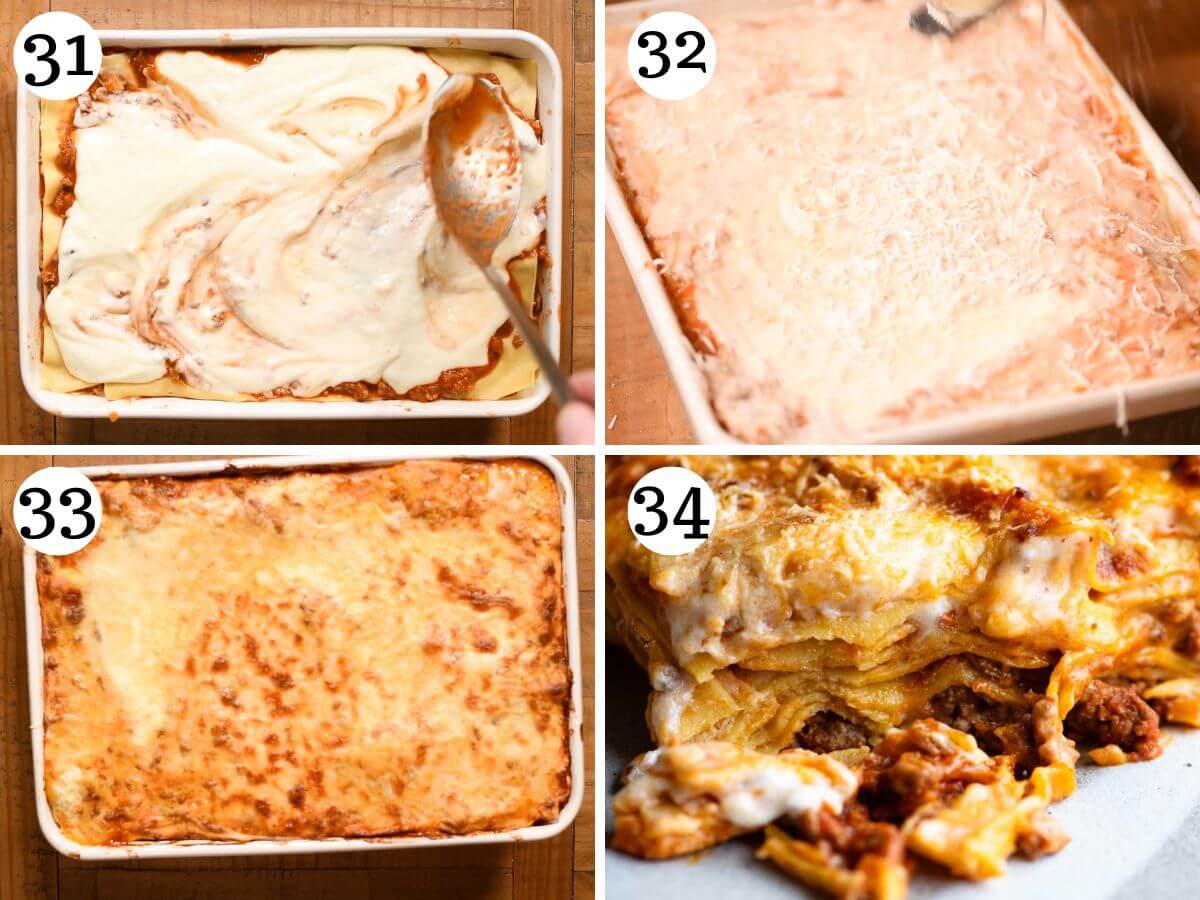
Let the lasagna rest for 10 minutes before cutting and serving (photo 34).
Recipe tips and FAQs
- Prepare the ragu the day before – I recommend making the ragu the day before not only because it needs a good few hours to simmer but leaving it overnight will allow the flavours to develop making it even more delicious.
- Drain the fat – a lot of fat is released when browning the lamb which will need to be drained off. Use a slotted spoon to remove the browned lamb to a bowl then pour all the fat into a separate bowl. Once the fat has hardened you can throw it in the food waste (don’t clog your drain).
- Lasagna sheets (pasta) – if you don’t want to make homemade pasta you can use store-bought pasta instead, I recommend using fresh lasagna sheets found in the refrigerator section.
- Use a kitchen scale for pasta – if making homemade pasta I highly recommend using a kitchen scale to weigh your flour. It’s the best way to get accurate results.
Yes, I recommend making the ragu the day before. You can assemble the whole lasagna and keep in the the fridge for up to 1 day before baking.
Yes, once cooled you can freeze the whole lasagna or cut it into individual portion sizes. let the lasagna defrost completely before baking. Alternatively, you can freeze the ragu and bechamel separately and defrost them before assembling the lasagna.
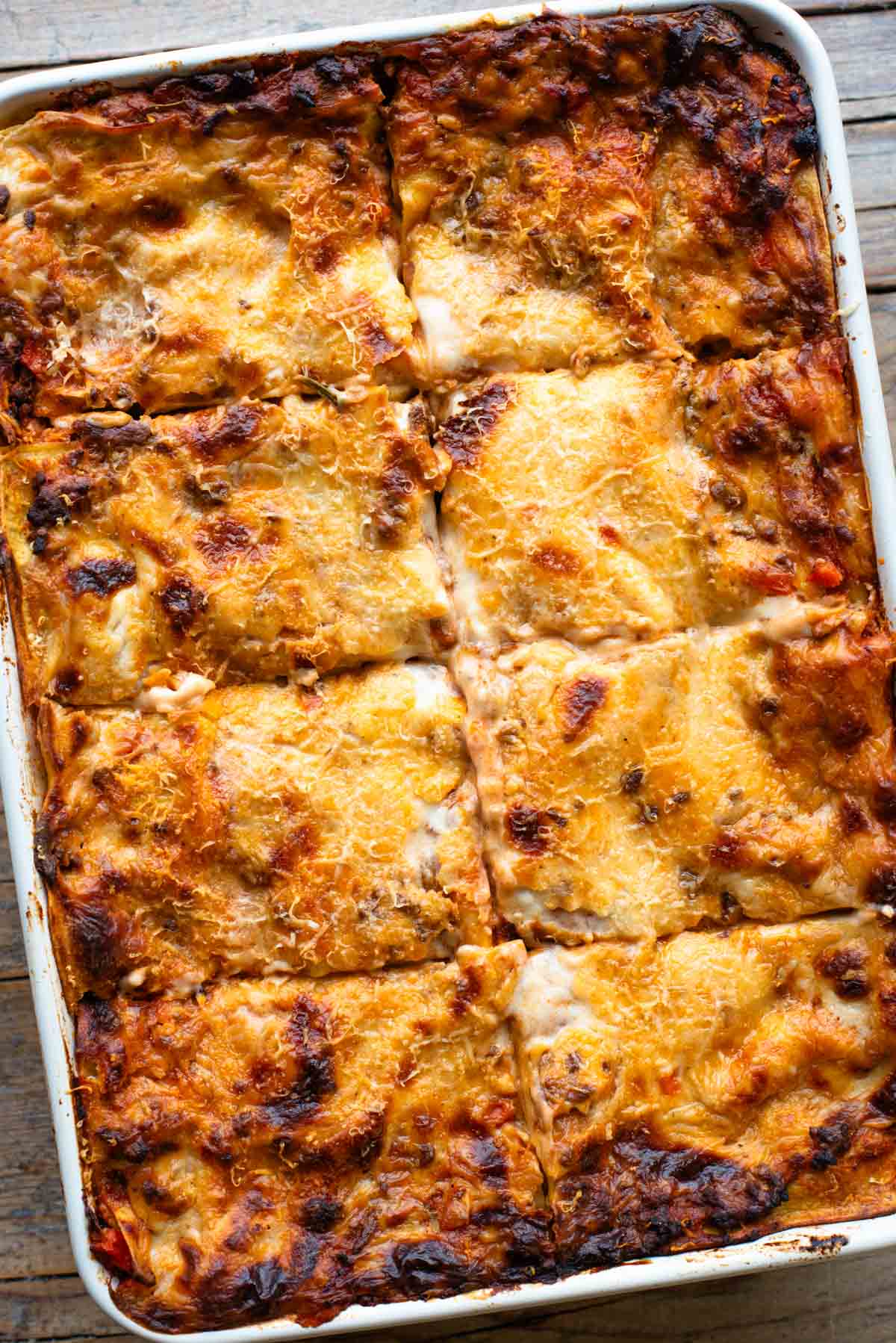
More Italian Easter recipes to try
If you’ve tried this Lamb lasagna recipe or any other recipe on the blog then don’t forget to rate the recipe and let me know how you got on in the comments below, I love hearing from you! You can also follow us on Facebook, Instagram and Pinterest or sign up to our Newsletter to see more of our delicious food
Step By Step Photos Above
Most of our recipes come with step by step photos, helpful tips and tricks to make it perfectly first time and even video!
Italian Lamb Lasagna with Pecorino Bechamel
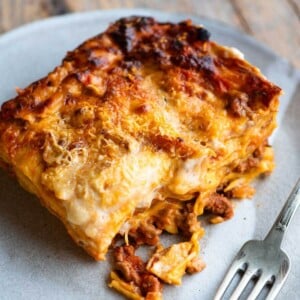
Equipment
- Pasta machine or rolling pin
- 9×13 inch baking dish
- clean kitchen towels (for blanching pasta)
- plastic wrap (cling film)
Ingredients
Ragu
- 1.7 lbs lamb mince, (800g) we used 20% fat
- 1 large carrot
- 1 large onion
- 1 large celery stick
- 2 cloves garlic
- 1 cup red wine, (240ml)
- 2 and 1/3 cups tomato passata (tomato puree), (700g)
- 5 and 1/4 cups chicken stock, (1250 ml)
- 1 bay leaf
- 1 sprig rosemary
Pasta dough
- 3 medium eggs, (220g)
- 1 egg yolk
- 300 g Italian 00 flour, (2 cups plus 2 tablespoons)
Pecorino bechamel
- 5 tablespoons butter, (70g)
- 5 tablespoons flour, (70g)
- 4 cups whole milk, (1 litre)
- 1 pinch freshly grated nutmeg
- 1 cup freshly grated Pecorino Romano, (70g)
- Salt and pepper
Instructions
Preparation notes
- I recommend making the ragu the day before not only because it needs a good few hours to cook but the flavours really develop with time so leaving it overnight will make it even more delicious.
To make the ragu
- Finely chop the carrot, celery and onion and set aside.
- Heat a drizzle of olive oil in a large pan and brown the lamb. Once browned remove the lamb to a bowl using a slotted spoon and pour all of the fat into a separate bowl (discard once solidified).
- Next, add about 1 tablespoon of olive oil to the pan and saute the soffritto (carrot, celery and onion) on a medium-low heat until soft but not browned. Do this slowly to develop flavour (about 10 minutes).
- Once softened, add the garlic and saute for about 1 minute. Add the drained lamb back to the veg and stir to combine. Add the red wine and let it reduce for about 2-3 minutes until you can no longer smell the alcohol.
- Add the tomato, half of the chicken stock, bay leaf and rosemary sprig. Stir to combine and let it simmer for 4 hours uncovered adding the remaining stock half way through. If the sauce reduces too much you can add more water.
Make the pasta dough
- Tip the flour on a clean work surface and make a large wide well in the middle. Add the eggs to the well and scramble them with a fork.
- Using your fork start incorporating the flour into the egg a little at a time until a rough dough forms. Use your hands to bring it together and knead it for 10 minutes.
- Pasta tip: the hydration of your pasta can vary depending on the size of your eggs/humidity. If it seems very sticky you can incorporate more flour a little at a time and if too dry you can wet your hands to knead the dough adding in more moisture.
- Once kneaded, wrap your dough in plastic wrap (cling film) and let it rest for at least 30 minutes.
Make your bechamel
- Add the butter to a saucepan on a medium heat. Once melted, add the flour and whisk into the butter for around 1 minute to create a roux.
- Next, add half of the milk whilst whisking until smooth and lump free. Once thickened, add the rest of the milk and whisk until smooth and thickened.
- Add a pinch of salt, pepper, nutmeg and the grated Pecorino cheese, stir until the cheese has melted and set aside.
Roll out and blanch the pasta
- Bring a large pot of water to a boil and salt it well.
- Meanwhile, set up your pasta machine and set it to the widest setting (usually number 0). Cut your dough in half keeping one half wrapped in plastic wrap.
- Flatten the other half so it’s easier to pass through your pasta machine and pass it through the widest setting. Fold one end of the dough to the middle and the other end right over that as if you were creating a leaflet. Flatten the dough and pass it through the widest setting again. Repeat this one more time.
- Next, roll your dough once through each setting up until the 3rd last number (usually number 7). You may need to lightly dust the pasta dough, surface and pasta machine with flour if it feels too sticky.
- Cut the pasta in sheets big enough to fit your lasagna dish. Blanch them in the boiling water (about 2 or 3 at a time) for 1 minute then transfer them to a clean kitchen towel. Let them dry out for a few seconds.
- Repeat this with the second half of the dough. Tip: I find it easier to start assembling the lasagna with half of the blanched pasta before rolling out the rest.
Layer the lasagna
- If baking straight away pre-heat the oven to 200C (400F).
- Spread a thin layer of ragu on the bottom of your baking dish and lay the first layer of pasta sheets on top (you can cut any excess pasta).
- For the next layer, spread out a large spoonful of ragu and a ladleful of bechamel spreading it out on top of the ragu. Continue the layering until you have used up all the ingredients (you should get 6 layers) making sure the final layer is a little ragu and a generous amount of bechamel. Top with a grating of Pecorino cheese and bake uncovered for 30-40 minutes until golden and bubbling.
- Let the lasagna rest for 10 minutes before cutting and serving.
Video
Notes
- Prepare the ragu the day before – I recommend making the ragu the day before not only because it needs a good few hours to simmer but leaving it overnight will allow the flavours to develop making it even more delicious.
- Drain the fat – a lot of fat is released when browning the lamb which will need to be drained off. Use a slotted spoon to remove the browned lamb to a bowl then pour all the fat into a separate bowl. Once the fat has hardened you can throw it in the food waste (don’t clog your drain).
- Lasagna sheets (pasta) – if you don’t want to make homemade pasta you can use store-bought pasta instead, I recommend using fresh lasagna sheets found in the refrigerator section.
- Use a kitchen scale for pasta – if making homemade pasta I highly recommend using a kitchen scale to weigh your flour. It’s the best way to get accurate results.
- Leftovers – the lasagna will keep well in the fridge for up to 2-3 days or can be frozen.
Helpful Info for All Recipes
- I always use extra virgin olive oil in all of my recipes unless stated otherwise
- When I use canned or jarred tomatoes of any kind I always use Cirio or Mutti brands for the best results and flavour.
- All vegetables are medium sized unless stated otherwise
- All recipes are tested and developed using a fan (convection) oven
- Find out more about how nutrition is calculated.
- Check out our must have Italian Pantry Staples.
- You can also find all our Essential Kitchen Tools for Italian Cooking.
Nutrition
Nutrition information is automatically calculated, so should only be used as an approximation.
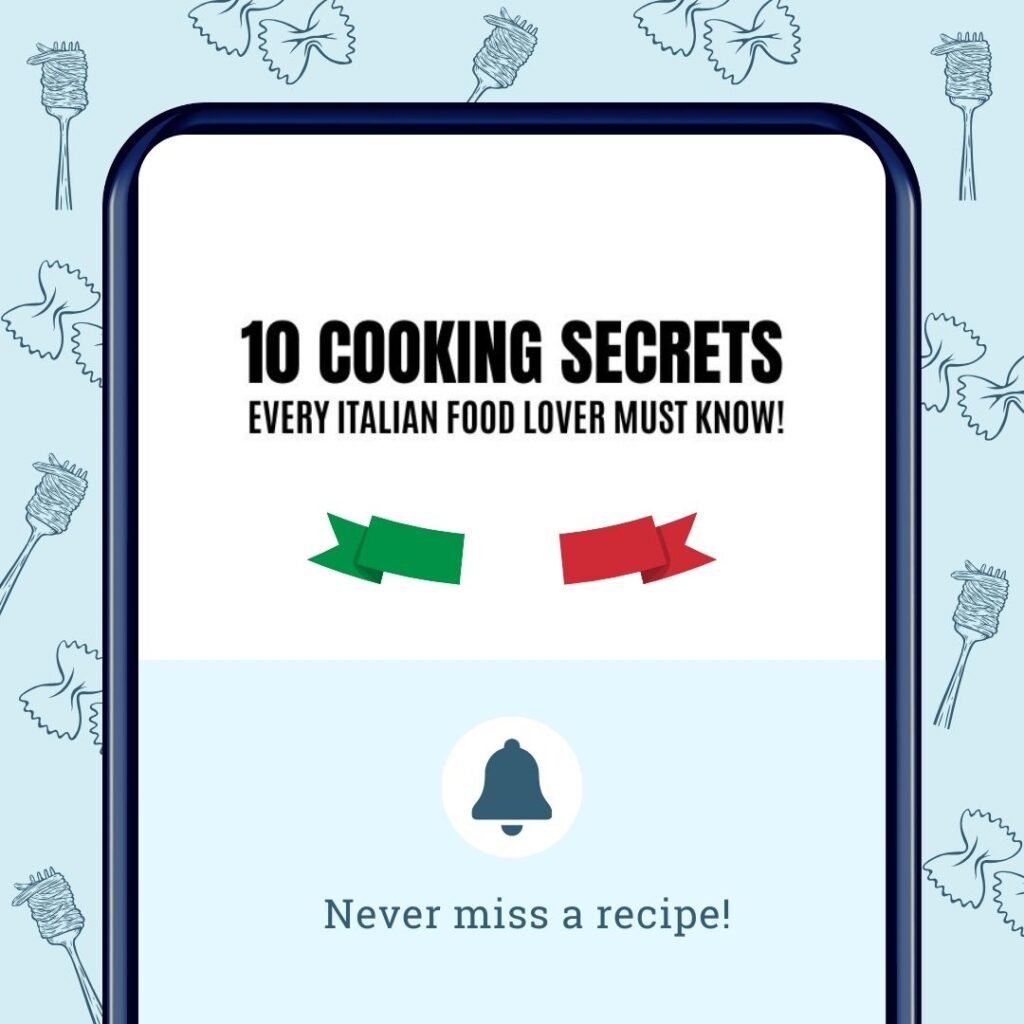
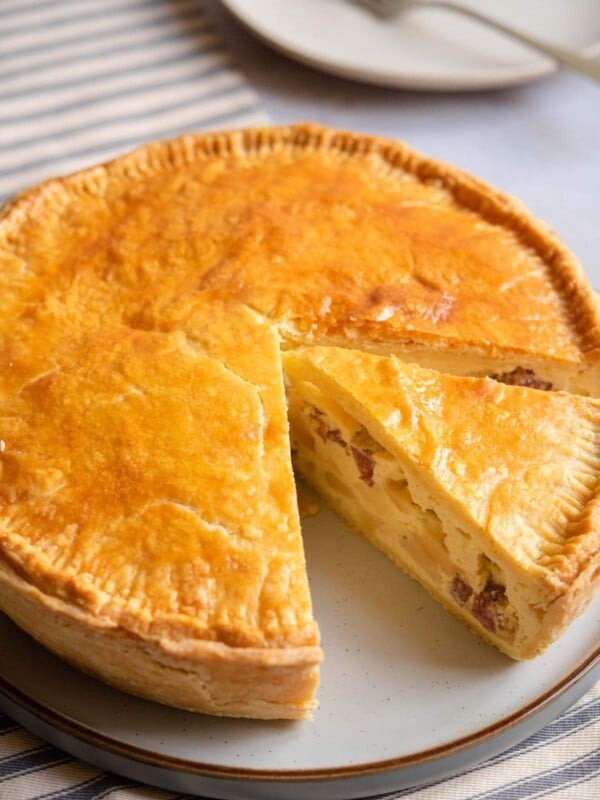
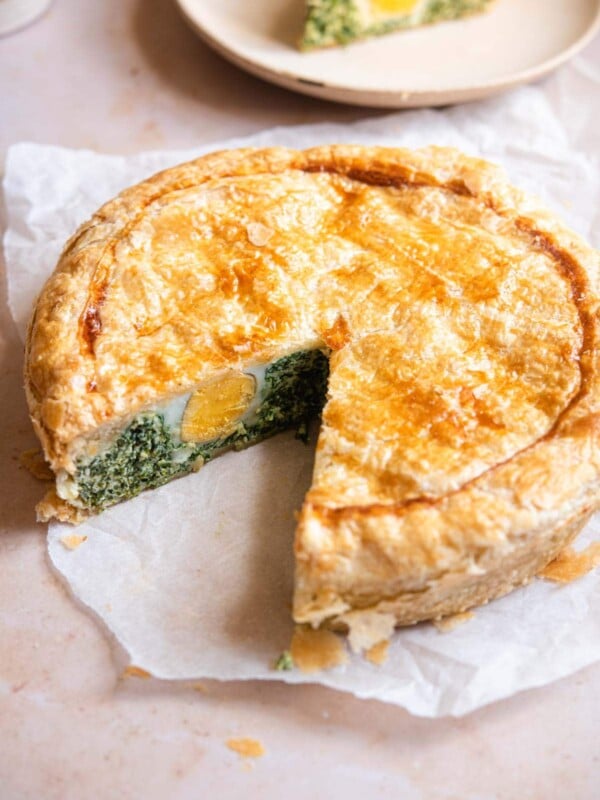
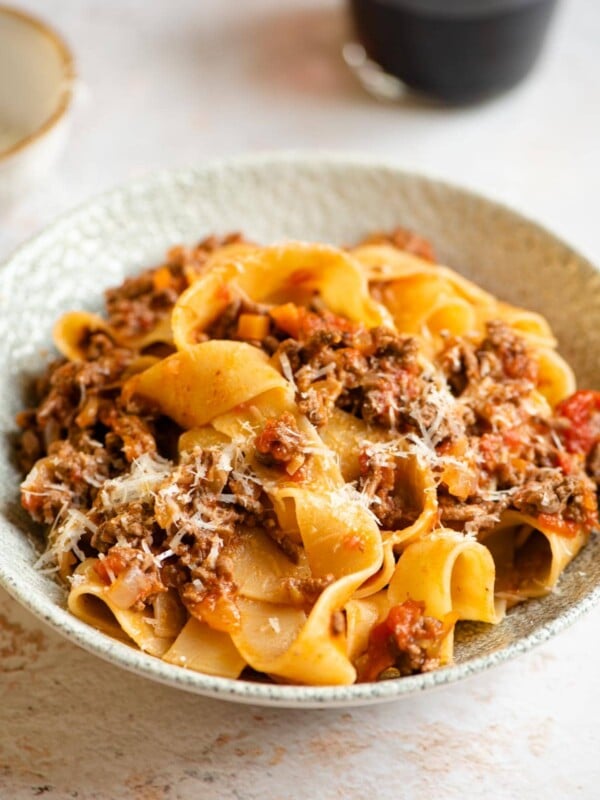

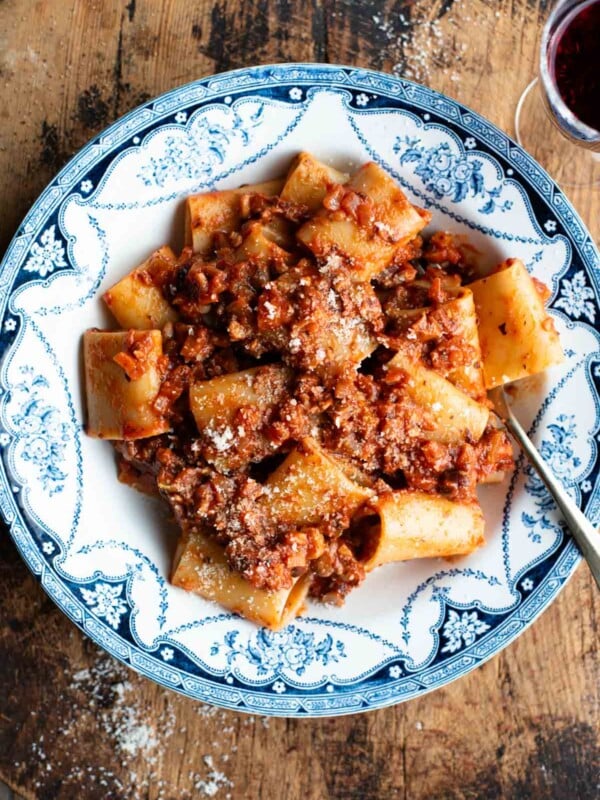
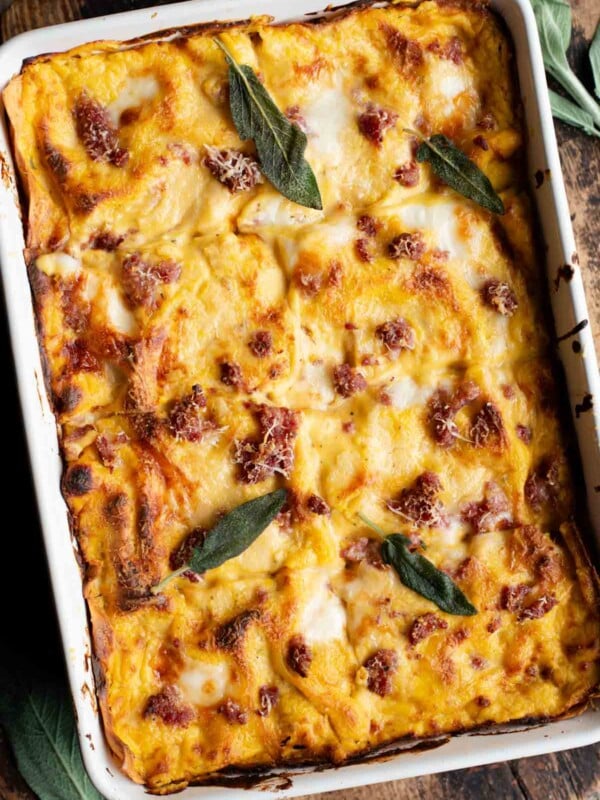
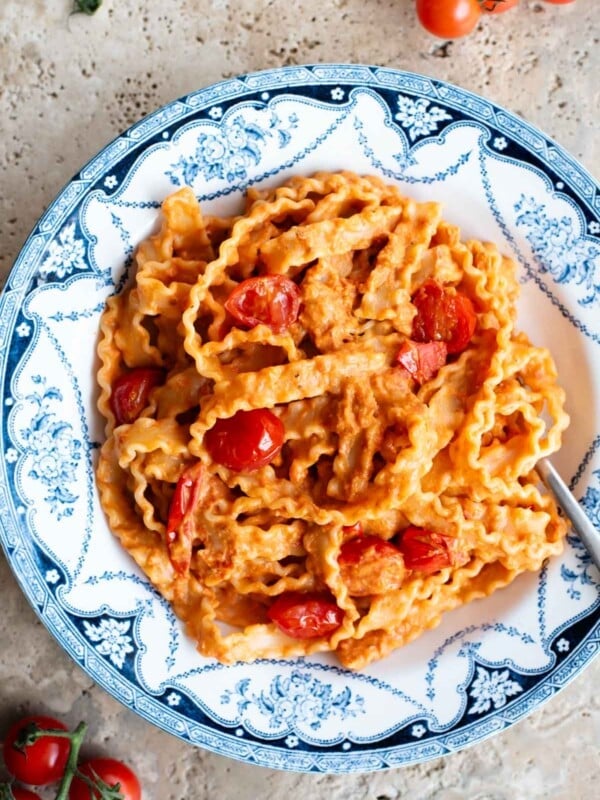
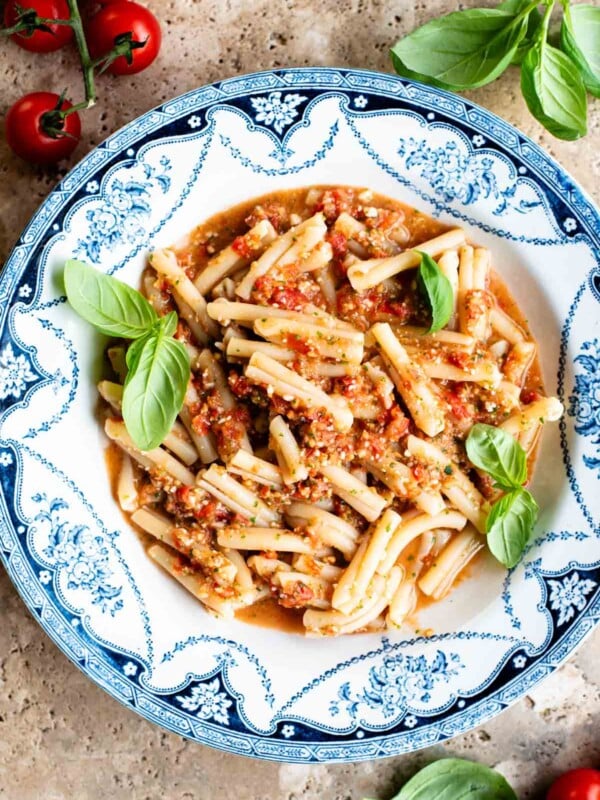









OK but not great. Nothing special. I will not make it again.
Unfortunately I couldn’t find lamb mince so I used beef instead. Delicious!!
This is fabulous! I’ve never had a lasagna with lamb, but it’s my favorite meat, so I know I’d love it!
Aw thank you! Hope you get a chance to try it 🙂